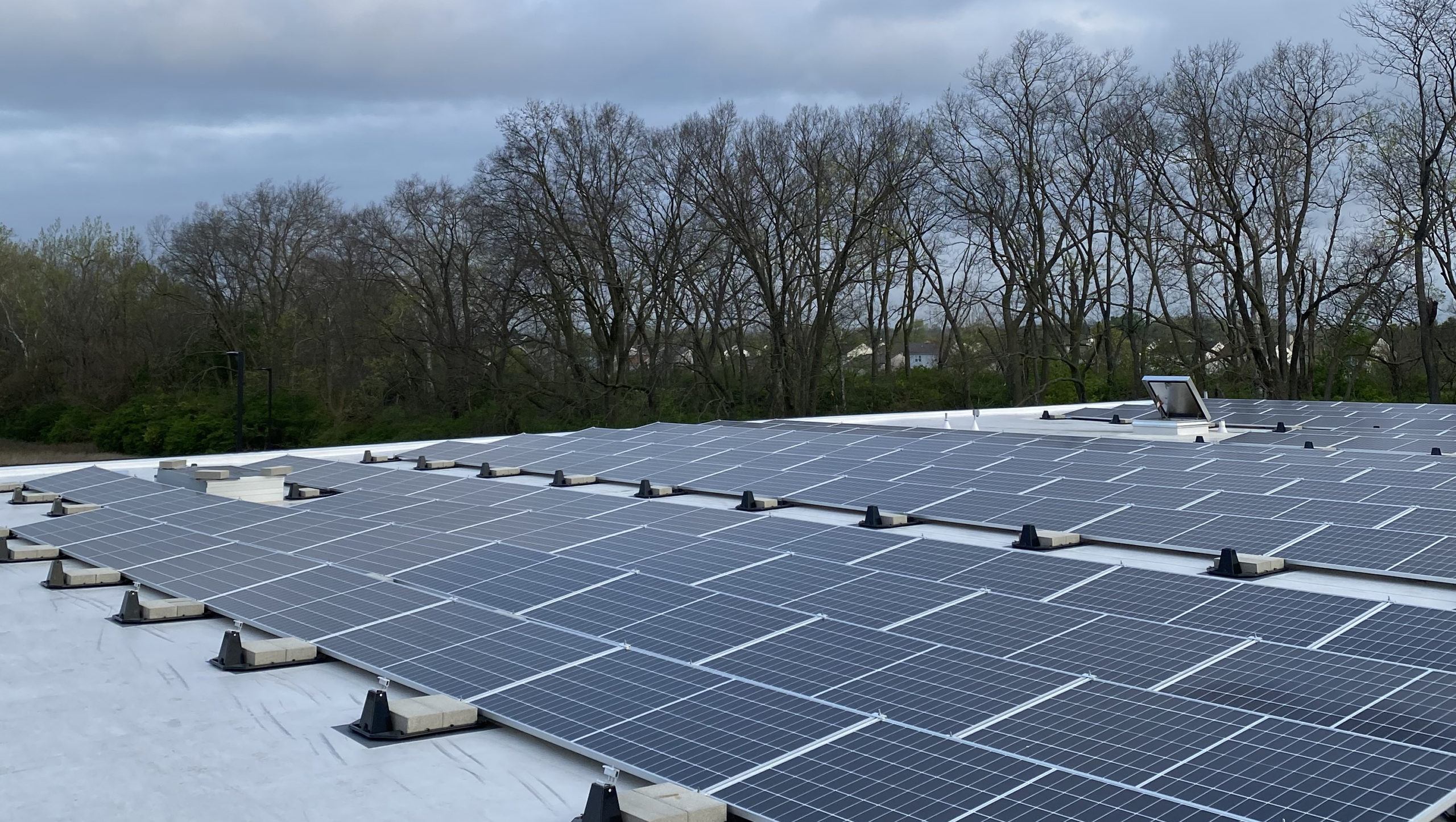Applying feasible solutions to reduce the impact of climate change on everyday life is rapidly becoming a global imperative.
In recognition of Earth Day 2021 (Thursday, April 22) and its #RestoreOurEarth theme, here is a short update about the Indianapolis Public Library’s new West Perry Branch.
According to Project Engineer Dylan Etheridge:
- Library officials expect to meet about 75 percent of their total energy needs using solar technology; 680 solar panels are newly installed on the library’s roof.
- By harvesting energy from the sun, Indianapolis Public Library will be able to substantially reduce operating expenses at this property.
- The savings can be reinvested into new library materials, programs, and services for local residents.
Located near the intersection of Southport & South Harding, the project is on schedule to open in 2021. Landscaping on the 60-acre site will feature trees and flowering shrubs, including some which are drought-tolerant species. Etheridge reports that among the trees being delivered and planted are juniper, spruce, sumac, honey locust, hawthorn, red maples, Kentucky coffeetree, and American elm.
Why are trees an important consideration in ground-up new construction?
- One acre of mature trees can absorb the same amount of carbon that is generated by driving a car 26,000 miles (they absorb other pollutants and toxins as well). That same acre provides enough oxygen for 18 people every year.
- Trees cool buildings, sidewalks, and parking lots by providing shade and releasing water. Most trees need a minimum of 15 gallons of water a week to survive, but they release 200-450 gallons of water per day depending on their variety and size.
- In addition, trees play an important role in erosion control, soil fertility, and water absorption.
Site prep for the 25,000 SF facility with parking included installation of a storm water management system. Because storm water can be full of pollutants and nitrogen, trees help reduce run-off instead allowing water to seep into the soil where it is filtered and cleaned.
LEED Certification through the U.S. Green Building Council may be pursued for the project, which includes Schmidt Associates, HBM Architects & Interior Designers, Schneider Geomatics, and RM Consulting.

